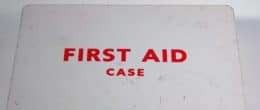Set Your Own Financial Limits (And Stick to Them)


File your taxes with confidence.
Your max tax refund is guaranteed.
Many money guidelines are helpful tools, but generic personal finance advice can end up hurting your wallet.
For obvious reasons, your budgeting strategy needs to be tailored to your specific financial goals.
Tips to help divide your budget into specific spending categories can help get you started, but it’s often easier said than done. For example, what if you live in an expensive city where 50 percent of your monthly budget goes to housing alone?
Because everyone’s situation is different, it’s important to create financial limits that fit your life. Here’s how to get started.
Analyze your income
Grab a pen and piece of paper. Write down the answers to these four questions about your income.
- How much do you earn per month?
- Have you already paid taxes on that money?
- Has a retirement contribution been deducted from it?
- Have you allocated a percentage of the money to savings?
Determine your next step
If you answered yes to the last three questions:
Congrats an automating savings before the money hits your checking account. You’re ahead of the pack!
The next step is to deduct your set monthly expenses from your monthly income. Set expenses often include: rent or mortgage payment, cell phone bill, utilities, transit costs (estimate gas payments), insurance and any debt payments.
If you answered yes to questions one and two but not three:
Deduct your set expenses (described above) from your monthly income.
After you subtract your set expenses, it should be easy to determine how much you can afford to save each month.
Decide on a percentage of the remaining amount you feel comfortable contributing to savings each month. Then immediately start contributing that amount from each paycheck. Many banks offer the option to automatically withdraw it from your paycheck and stash it into your savings before it even hits your checking account. That way you don’t really realize you had the money to begin with.
Let’s say you have $1,500 in your account after set expenses and taxes. There’s a good chance you can easily live off $1,000 each month, so that leaves $500 (about 33 percent) to save.
If you answered yes to question one but not two or three:
Does your employer offer a 401(k) or 403(b) retirement plan with a matching contribution? That means, your employer will match the percentage of your pay you contribute (typically up to a specific amount). If yes, get in touch with your HR department tomorrow and set up a contribution that’s at least enough to get the company match.
If they don’t offer that benefit, start saving money each month to fund an IRA retirement account. In 2017, you can contribute up to $5,500 depending on your income levels. That’s $458 per month if you want to fully fund your IRA.
Next, deduct any set expenses from your monthly income.
The remaining amount can be split among food, entertainment, savings and any other financial goals you may have.
Set a goal amount you want to save each month – on top of your IRA contributions – to create an emergency fund or savings cushion.
Immediately transfer that amount into a savings account when you receive it. Or, set up automatic withdrawals thorugh your bank to make it even easier.
If you’ve answered no to all three questions:
Don’t waste time trying to outwit Uncle Sam. The IRS will come for you, so whatever happens, make sure you have enough saved to pay taxes.
Use this tax calculator quickly determine how much you’ll owe.
Set a percentage of your monthly income to go towards taxes, that way you know you have enough saved. Then deduct your monthly set expenses from the remaining amount.
Once you’ve saved enough for tax and to keep a roof over your head, put money each month into an IRA contribution for retirement or set up a 401(k) deduction with your employer.
Lastly, calculate the amount you can afford to save in an emergency fund each month. That savings account is important – especially if you won’t have a tax refund to pad your savings account later on.
No matter how you answered the questions:
Any remaining amount after all savings and set expenses have been accounted for can be used to spend on food, entertainment or additional money goals, like a vacation trip fund.
You can also choose to get aggressive with savings or debt payment goals.
Divide the number by four and see how much you have to spend per week. That will help you keep a close eye on your budget to ensure your spending habits stay in check.
Determine the budgeting method that works best for you.
Stick to those financial limits
Creating a weekly financial limit can help you stick to budgets better than looking at a 30-day period of time and trying not to overspend.
Credit cards make it easy to not only overspend, but to also forget how much was spent before the bill comes.
In order to combat this issue, take one of two paths: cash diet or pay off credit cards during the month.
Cash diets are a way of sticking to strict limits. Determine how much you can afford to spend each week and only take that amount out in cash to use instead of a credit card.
If you have to use a credit card, remove that amount of cash from your wallet and set it aside to use next week.
If carrying cash doesn’t appeal to you, try your best to pay off any credit cards as you go during the month.
Pick a day of the week to log in to your online credit card accounts and pay them down. That way your bank account will accurately reflect the amount of money you actually have to spend.
There are numerous ways to budget money. That’s why it’s essential to tailor a plan specific to your income and financial limits.






